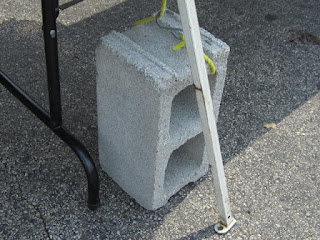BUY SAFELY, SELL SAFELY: AVOIDING COUNTERFEIT MERCHANDISE
First Published on fleamarketzone.com and Merchandiser Magazine
Buy Safely, Sell Safely: Avoiding Counterfeit Merchandise
By Sharon Wolff, Media and Merchandise Consultant to Wolff’s Flea Market
Counterfeiting is a huge worldwide problem. Although fakes might end up on a flea market table, they did not originate there! They came from somewhere else—a source. We aim to educate and empower our clientele into making safe purchasing decisions. Here, I will introduce a few quick tips and tools for avoiding obtaining counterfeit products for resale. As a seller, you must do your own research and learn to ask your own questions. Hopefully, by the end of this article, my fellow vendors will acquire a few usable tips on how to analyze the sources of their products.
Counterfeits continually evolve into more authentic looking versions. Newly counterfeited brands and labels are regularly introduced to the online and wholesale marketplace. Unfortunately, consumer demand for low cost look-alike versions of high-end designer and name brand products remains high. One needs only to perform a Google search to find thousands of news articles and warnings related to the dangers and prevalence of counterfeits.
I sometimes refer to flea markets as a “final buffet” in the economic chain of counterfeit sales. While raids, arrests and sentencing occur as related to counterfeits seized at customs, online sites or stores, flea market vendors are publicly vulnerable because they sell their wares out in the open at highly trafficked venues.
There are three components of analysis that we recommend using when figuring out if the merchandise is counterfeit or not. Applying one or more of these overlapping concepts may assist a reseller in analyzing his or her potential merchandise. Sometimes, just one component will tell the story and, “if it’s not one thing, then it’s another.”
Suspect Categories:
We recommend that everyone become aware of at least eight in-demand consumer categories.
• Electronics
• Purses
• CD’s/DVD’s
• Clothing
• Perfume and Cosmetics
• Jewelry and Sunglasses
• Toys
• Licensed sports apparel
• Purses
• CD’s/DVD’s
• Clothing
• Perfume and Cosmetics
• Jewelry and Sunglasses
• Toys
• Licensed sports apparel
Suspect Brands:
Successful vendors seek what their customers desire. However, a pitfall with seeking cheap prices on popular brands is that these same brands are at risk for being counterfeited.
• Logos: familiarize yourself with sports team and a variety of designer logos
• Brand names: know brand names so you can tell the difference between generic, compatible and designer graphics and trademarks
• Popular and Vulnerable Designers: sellers need to know the top designer brands that are counterfeited. Wolff’s keeps a database of over one hundred vulnerable brands. For example, we recommend sellers should at least recognize the logos and names of designers and brands like Coach, Louis Vuitton, Gucci, Chanel, Prada, The North Face, OtterBox, Apple, Samsung, Hello Kitty, Disney and sports teams. A seller should then be suspicious if offered a deal or quantity of one of these brands
• News: follow local and international news stories on busts, arrests, trademark lawsuits and sentencing as related to counterfeits
• Pay attention to region or market: products and brands may vary depending upon local customers, so learn your population and adjust your need for knowledge accordingly
Parameters:
These are a few specifics to look out for when looking at new merchandise that could be counterfeit.
• Price: be suspicious if the offered price it is too good to be true
• Packaging: is it cheap, blank or different from the authentic version?
• Spelling: misspellings on packaging and tags are a giveaway that the item is a fake
• Quality: poor quality on a supposed high-end item indicates that it is fake-bad stitching, broken seams.
• Quantity: be suspicious of a high quantity of a current, popular name brand item
• Source: a “guy” or an anonymous Internet wholesaler could be suspicious
• Comparison to real item: visit retail stores to study authentic products
• Realistic Availability: is it realistic for your source to legitimately offer this brand, type or quantity of item to you?
• Existence factor: the fact that the item exists in a nontraditional or unauthorized location
Now that you know a few ways to identify counterfeit sources and products, we wish you happy shopping and happy selling!

good info..very informative 4 some 1 like me looking 2 get into the flea biz! tx
ReplyDelete